TEI Studio-workshop 2015:
Wearable Computing with 3D Augmediated Reality, Digital Eye Glass,
Egography (Egocentric/First-Person Photographic/Videographic Gesture
Sensing), and Veillance
Wearable Computing, 3D Aug* Reality, Photographic/Videographic Gesture Sensing, and Veillance, as published in ACM Digital Libary: link.
Talk slides from introduction
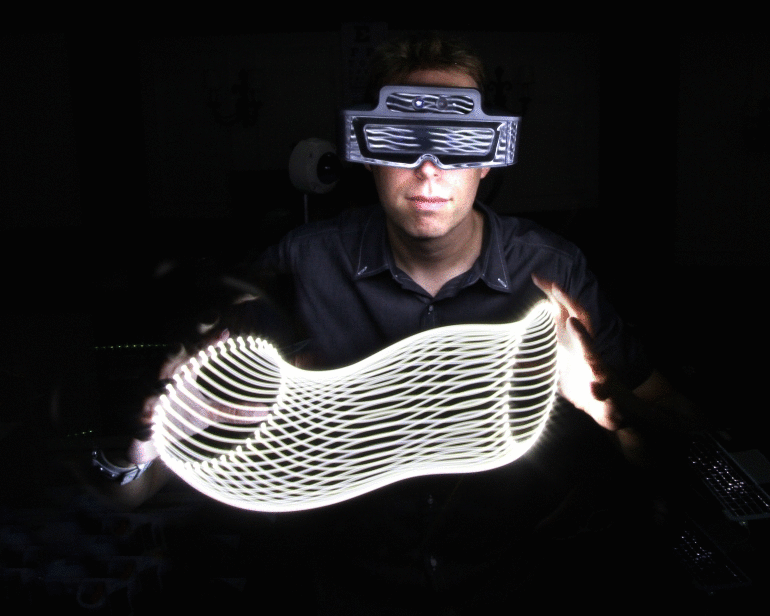
Friday, 16 January, 2015, Stanford University, at TEI2015
Organizers:
- Steve Mann, widely recognized as "The Father of Wearable Computing"
(IEEE ISSCC2000), who "persisted in his vision and ended up founding a new discipline" (Negroponte, 2001);
- Steve Feiner, Augmented Reality pioneer, Elected to the CHI Academy.
Recipient of IEEE VGTC 2014 Virtual Reality Career Award,
ACM UIST 2010 Lasting Impact Award, and best paper awards at ACM UIST,
ACM CHI, ACM VRST, and IEEE ISMAR;
- Stefano Baldassi, Stanford, NYU, and Head of Perceptual Interactions
and User Research at Meta;
- Soren Harner, Stanford, Vice President of Engineering at Meta;
- Jayes Hansen, Hollywood's #1 UI (User-Interface) designer, and creator
of UIs for feature films like Marvel's The Avengers and Iron Man films,
Ender's Game, and The Hunger Games: Catching Fire/Mockinjay Parts 1
and 2.; and
- Ryan Janzen, http://ryanjanzen.ca/
One-day Studio-workshop: Learn the world's
most advanced AR system, Meta Spaceglass, and create games like this:
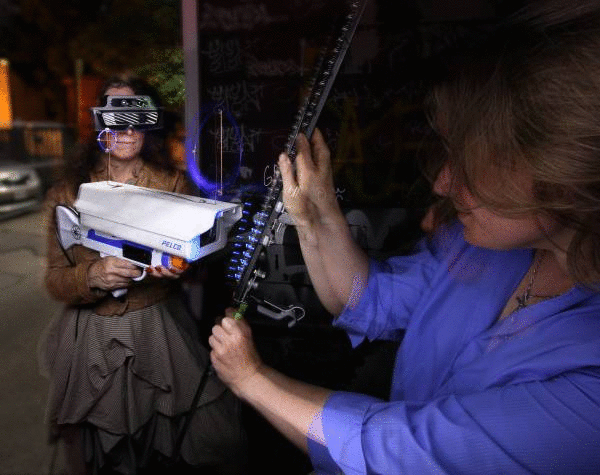
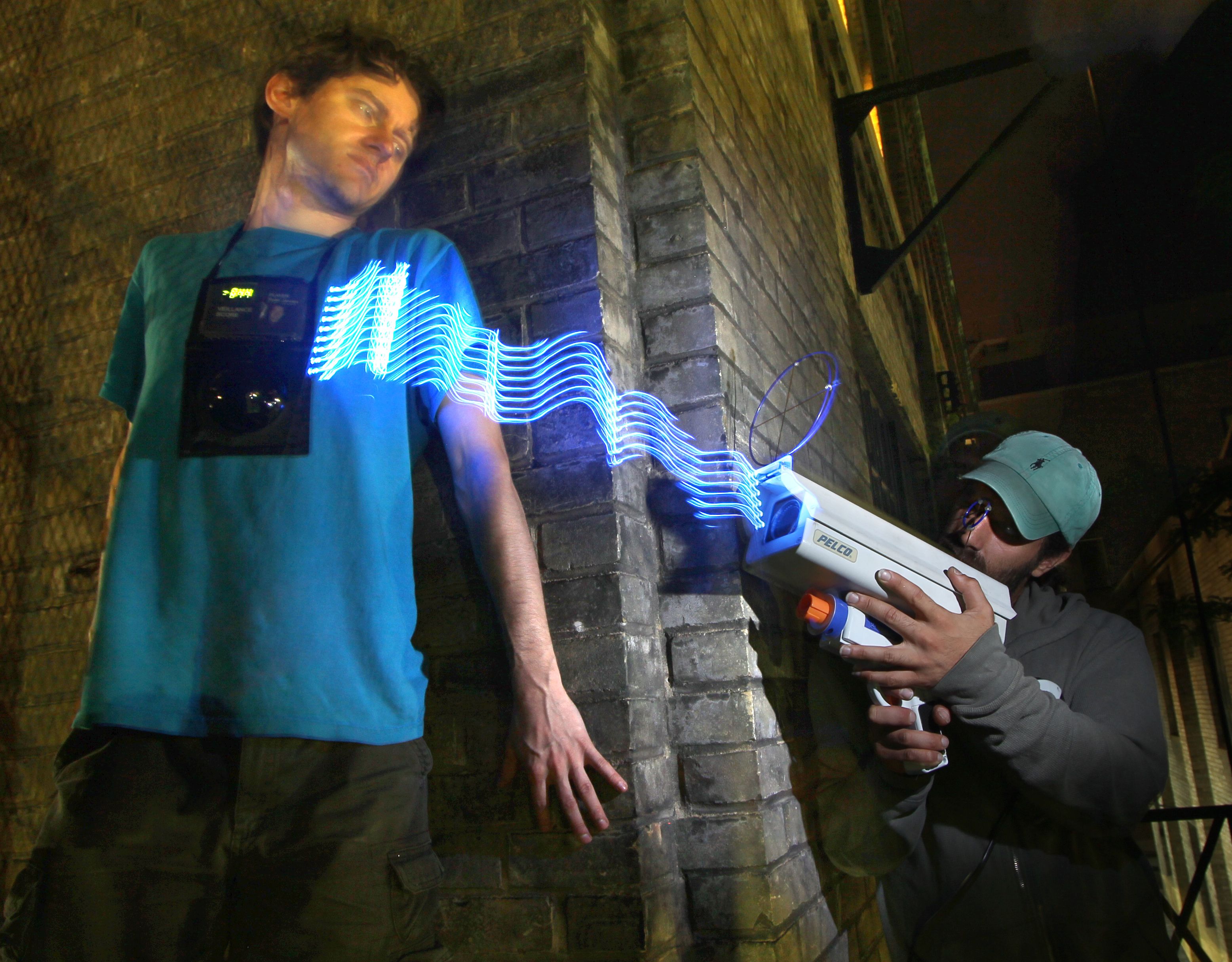
Website: http://wearcam.org/tei2015/
Registration: http://www.tei-conf.org/15/registration/
PDF: tei2015.pdf
Date: Friday, 16 January, 2015
Background:
The general-purpose wearable multimedia computer has enjoyed a long history
since the 1970s:
 .
.
Recently wearable computing has become mainstream:
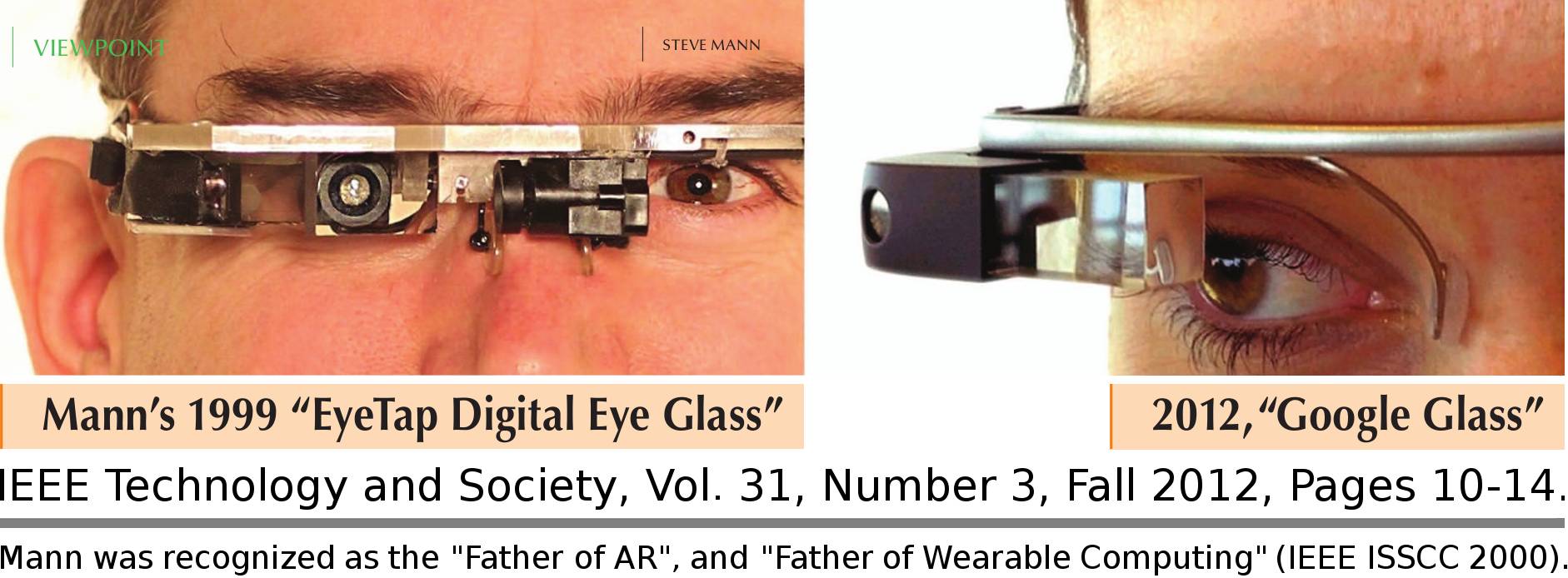
Wearable computers and Generation-5 Digital Eye Glass easily recognize a
user's own gestures, forming the basis for shared Augmediated Reality.
This
Studio-Workshop presents the latest in wearable AR. Participants will
sculpt 3D objects using hand gestures, print them on a 3D printer, and
create Unity 3D art+games using
computational lightpainting.
Participants will also learn how to use 3D gesture-based AR to visualize and
understand real-world phenomena, including being able to see sound waves,
see radio waves, and see sight itself (i.e. to visualize vision itself,
through abakographic user-interfaces that interact with the time-reversed
lightfield, also known as the "sightfield"), as shown below:
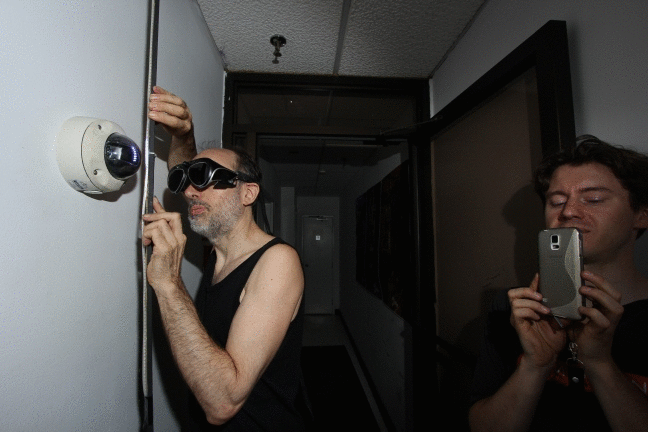
(Surveillance camera visualized with Meta Spaceglass and the "magic meta wand")
Here's a portrait of Thalmic's Chris Goodine holding
a gun camera in front of the mirror at FITC Wearables;
we can see reflection of "veillance flux" in the mirror:
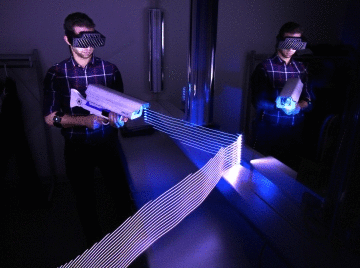 (click for more from this series)
(click for more from this series)
Find hidden cameras using abakography:
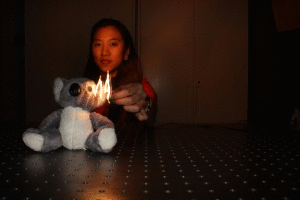
(found a camera hidden in the right eye of a cute stuffed animal)
and visualize the veillance flux of the cameras using 3D AR.
Participants will learn the Meta SDK and how to build multisensory 3D AR
interfaces and Natural User Interfaces including some that interact with the
real world. Concepts taught will include:
- Integral Kinematics introduced through the development of novel 3D AR NUI
fitness apps, including the MannFit System;
- Abakography (3D computational
lightpainting) for the visualization of
sound waves, radio waves, and surveillance flux (sightfields) using
surveilluminescence (lights that change color when they are being
watched by a camera).
Takes place in the Stanford Design Loft space (graduate student design loft)
http://mwdes.com/index.php?/design/stanford-design-loft-redesign/
Abakographs from workshop:
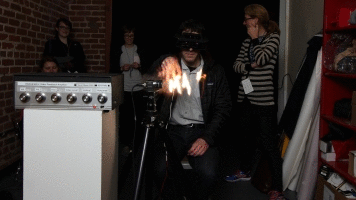
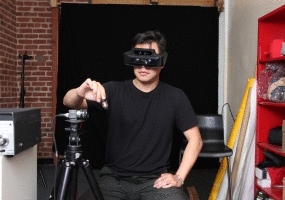
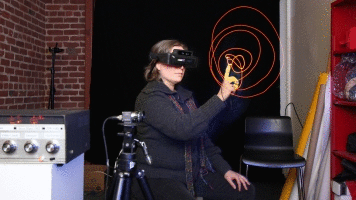
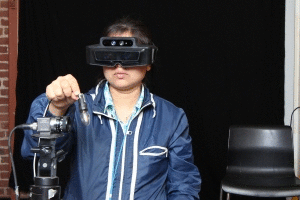

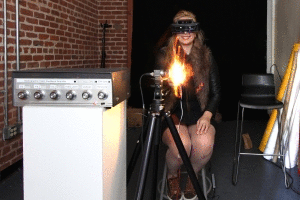
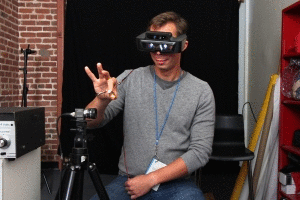
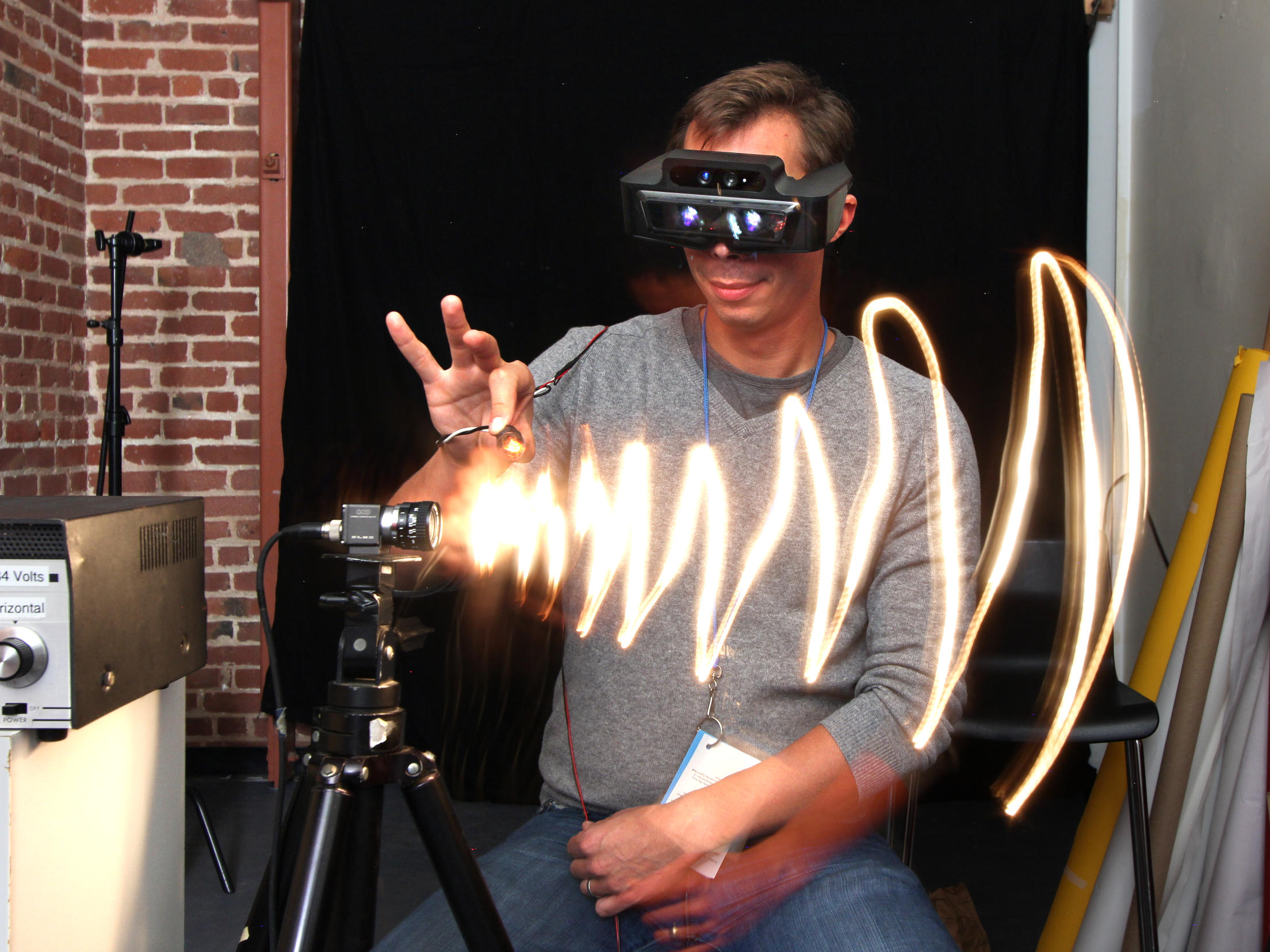
(Click any of these for link to more of them.)




 .
.


 (click for more from this series)
(click for more from this series)








